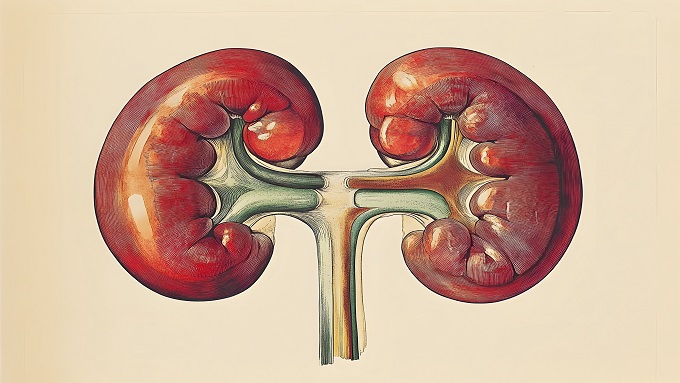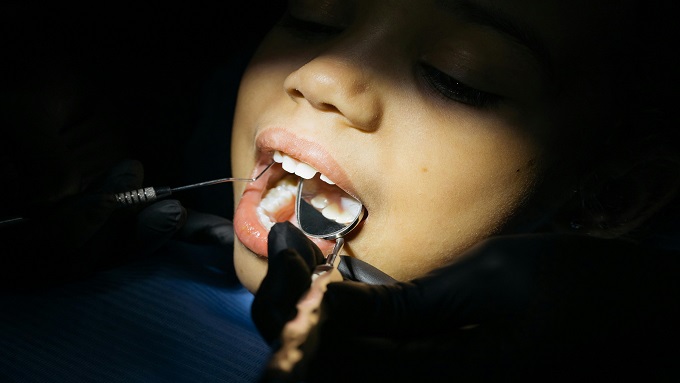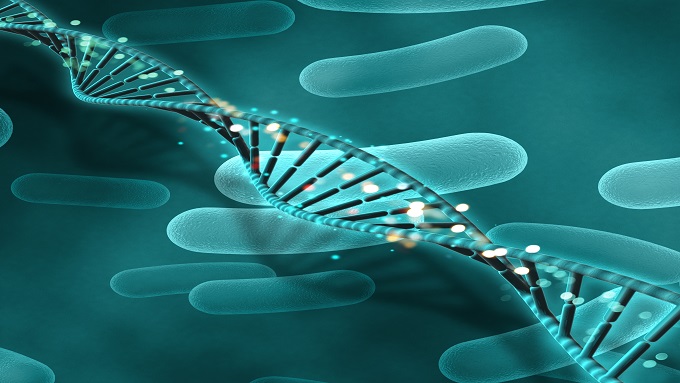Gut-Brain Axis, Notch, and Brain Cancer: ‘The Rising Three’

Downloads
Highlights
- The gut-brain axis (GBA) is a bidirectional communication network linking the gastrointestinal tract and the central nervous system (CNS), involving neurons and various signaling molecules such as endocrine, humoral, metabolic, and immunological factors.
- The Notch signaling pathway is implicated in the development of brain tumors, including gliomas, which show elevated Notch receptor levels. This pathway is critical in tumor cell proliferation, survival, and invasiveness.
Abstract
Background: The gut-brain axis (GBA) facilitates reciprocal communication between the central and enteric nervous systems. The connection between the GBA, Notch, and brain cancer is a complex and intricate subject that warrants further exploration. Brain cancer has a multifaceted pathophysiology and structure, making the journey from diagnosis to treatment challenging. The involvement of Notch in the signaling pathway could be relevant to both brain cancer and the gut-brain axis. Objective: This research aimed to examine the complex interplay between the gut-brain axis (GBA), Notch signaling, and brain cancer, specifically gliomas. Material and Method: This study was a scoping review conducted using multiple search engines, including PubMed, ProQuest, and Cambridge Core, spanning from 2018 to 2023. The collected materials were filtered and subsequently analyzed. Result: The existence of the gut-brain axis is a fascinating topic for in-depth exploration. The complex relationship between Notch and the gut-brain axis may offer valuable insights into the pathogenesis of brain cancer. The literature review identified two publications, which were analyzed in more detail. The gut-brain axis (GBA) refers to a bidirectional communication network between the central nervous system and the enteric nervous system, regulating gastrointestinal functions. The identification of the Notch signaling pathway suggests its role in the development of brain tumors. Conclusion: The connections between the gut-brain axis, Notch, and brain cancer are evident. The Notch pathway, as a signaling mechanism, is linked to brain cancer, and the gut-brain axis is also associated with it. This interconnected relationship has the potential to uncover novel avenues for diagnosis and therapy, warranting further research.
Alcantara Llaguno, S., Sun, D., Pedraza, A. M., et al. 2019. Cell-of-origin susceptibility to glioblastoma formation declines with neural lineage restriction. Nature Neuroscience, 22(4): 545–555. doi: 10.1038/s41593-018-0333-8.
Almutairi, M. M. A., Gong, C., Xu, Y. G., et al. 2016. Factors controlling permeability of the blood–brain barrier. Cellular and Molecular Life Sciences, 73(1): 57–77. doi: 10.1007/s00018-015-2050-8.
Androutsellis-Theotokis, A., Leker, R. R., et al. 2006. Notch signalling regulates stem cell numbers in vitro and in vivo. Nature, 442(7104): 823–826. doi: 10.1038/nature04940.
Bai, H., Harmancı, A. S., Erson-Omay, E. Z., et al. 2016. Integrated genomic characterization of IDH1-mutant glioma malignant progression. Nature Genetics, 48(1): 59–66. doi: 10.1038/ng.3457.
Berrill, J. W., Gallacher, J., Hood, K., et al. 2013. An observational study of cognitive function in patients with irritable bowel syndrome and inflammatory bowel disease. Neurogastroenterology & Motility, 25(11): 918. doi: 10.1111/nmo.12219.
Bond, A. M., Ming, G., Song, H. 2015. Adult mammalian neural stem cells and neurogenesis: Five decades later. Cell Stem Cell, 17(4): 385–395. doi: 10.1016/j.stem.2015.09.003.
Bush, N. A. O., Butowski, N. 2017. The effect of molecular diagnostics on the treatment of glioma. Current Oncology Reports, 19(4): 26. doi: 10.1007/s11912-017-0585-6.
Carabotti, M., Scirocco, A., Maselli, M. A., et al. 2015. The gut-brain axis: Interactions between enteric microbiota, central and enteric nervous systems. Annals of gastroenterology, 28(2): 203–209. Available at: http://www.ncbi.nlm.nih.gov/pubmed/25830558
Crouzet, L., Gaultier, E., Del'Homme, C., et al. 2013. The hypersensitivity to colonic distension of IBS patients can be transferred to rats through their fecal microbiota. Neurogastroenterology & Motility, 25(4). doi: 10.1111/nmo.12103.
Cryan, J. F., O'Riordan, K. J., Cowan, C. S. M., et al. 2019. The microbiota-gut-brain axis. Physiological Reviews, 99(4): 1877–2013. doi: 10.1152/physrev.00018.2018.
D’Alessandro, G., Antonangeli, F., Marrocco, F., et al. 2020. Gut microbiota alterations affect glioma growth and innate immune cells involved in tumor immunosurveillance in mice. European Journal of Immunology, 50(5): 705–711. doi: 10.1002/eji.201948354.
De, I., Steffen, M. D., Clark, P. A., et al. 2016. CSF1 overexpression promotes high-grade glioma formation without impacting the polarization status of glioma-associated microglia and macrophages. Cancer Research, 76(9): 2552–2560. doi: 10.1158/0008-5472.CAN-15-2386.
Dissing-Olesen, L., Hong, S., Stevens, B. 2015. New brain lymphatic vessels drain old concepts. EBioMedicine, 2(8): 776–777. doi: 10.1016/j.ebiom.2015.08.019.
Dono, A., Nickles, J., Rodriguez-Armendariz, A. G., et al. 2022. Glioma and the gut–brain axis: Opportunities and future perspectives. Neuro-Oncology Advances, 4(1). doi: 10.1093/noajnl/vdac054.
DuPont, H. L. 2014. Review article: Evidence for the role of gut microbiota in irritable bowel syndrome and its potential influence on therapeutic targets. Alimentary Pharmacology & Therapeutics, 39(10): 1033–1042. doi: 10.1111/apt.12728.
Engler, A., Rolando, C., Giachino, C., et al. 2018. Notch2 signaling maintains NSC quiescence in the murine ventricular-subventricular zone. Cell Reports, 22(4): 992–1002. doi: 10.1016/j.celrep.2017.12.094.
Erny, D., Hrabě de Angelis, A. L., Jaitin, D., et al. 2015. Host microbiota constantly control maturation and function of microglia in the CNS. Nature Neuroscience, 18(7): 965–977. doi: 10.1038/nn.4030.
Eyler, C. E., Matsunaga, H., Hovestadt, V., et al. 2020. Single-cell lineage analysis reveals genetic and epigenetic interplay in glioblastoma drug resistance. Genome Biology, 21(1): 174. doi: 10.1186/s13059-020-02085-1.
Foster, J. A., McVey Neufeld, K.-A. 2013. Gut–brain axis: How the microbiome influences anxiety and depression. Trends in Neurosciences, 36(5): 305–312. doi: 10.1016/j.tins.2013.01.005.
Gage, F. H., Temple, S. 2013. Neural stem cells: Generating and regenerating the brain. Neuron, 80(3): 588–601. doi: 10.1016/j.neuron.2013.10.037.
Galvão, R. P., Zong, H. 2013. Inflammation and gliomagenesis: Bi-directional communication at early and late stages of tumor progression. Current Pathobiology Reports, 1(1): 19–28. doi: 10.1007/s40139-012-0006-3.
Gershon, M. D., Margolis, K. G. 2021. The gut, its microbiome, and the brain: Connections and communications. Journal of Clinical Investigation, 131(18). doi: 10.1172/JCI143768.
Giachino, C., Taylor, V. 2014. Notching up neural stem cell homogeneity in homeostasis and disease. Frontiers in Neuroscience, 8. doi: 10.3389/fnins.2014.00032.
Gieryng, A., Pszczolkowska, D., Walentynowicz, K. A., et al. 2017. Immune microenvironment of gliomas. Laboratory Investigation, 97(5): 498–518. doi: 10.1038/labinvest.2017.19.
Hambardzumyan, D., Gutmann, D. H., Kettenmann, H. 2016. The role of microglia and macrophages in glioma maintenance and progression. Nature Neuroscience, 19(1): 20–27. doi: 10.1038/nn.4185.
Imayoshi, I. et al. (2013) ‘Oscillatory control of factors determining multipotency and fate in mouse neural progenitors’, Science, 342(6163), pp. 1203–1208. doi: 10.1126/science.1242366.
Katsushima, K., Natsume, A., Ohka, F., et al. 2016. Targeting the notch-regulated non-coding RNA TUG1 for glioma treatment. Nature Communications, 7(1): 13616. doi: 10.1038/ncomms13616.
Kennedy, P. J. 2014. Irritable bowel syndrome: A microbiome-gut-brain axis disorder?. World Journal of Gastroenterology, 20(39): 14105. doi: 10.3748/wjg.v20.i39.14105.
Lathia, J. D., Mack, S. C., Mulkearns-Hubert, E. E., et al. 2015. Cancer stem cells in glioblastoma. Genes & Development, 29(12): 1203–1217. doi: 10.1101/gad.261982.115.
Liau, B. B., Sievers, C., Donohue, L. K., et al. 2017. Adaptive chromatin remodeling drives glioblastoma stem cell plasticity and drug tolerance. Cell Stem Cell, 20(2): 233-246.e7. doi: 10.1016/j.stem.2016.11.003.
Lim, K. J., Brandt, W. D., Heth, J. A., et al. 2015. Lateral inhibition of Notch signaling in neoplastic cells. Oncotarget, 6(3): 1666–1677. doi: 10.18632/oncotarget.2762.
Lisi, L, Ciotti, G. M. P., Braun, D., et al. 2017. Expression of iNOS, CD163 and ARG-1 taken as M1 and M2 markers of microglial polarization in human glioblastoma and the surrounding normal parenchyma. Neuroscience Letters, 645: 106–112. doi: 10.1016/j.neulet.2017.02.076.
Louis, D. N., Perry, A., Reifenberger, G., et al. 2016. The 2016 World Health Organization classification of tumors of the central nervous system: A summary. Acta Neuropathologica, 131(6): 803–820. doi: 10.1007/s00401-016-1545-1.
Man, J., Yu, X., Huang, H., et al. 2018. Hypoxic induction of vasorin regulates Notch1 turnover to maintain glioma stem-like cells. Cell Stem Cell, 22(1): 104-118.e6. doi: 10.1016/j.stem.2017.10.005.
Mangani, D., Weller, M., Roth, P. 2017. The network of immunosuppressive pathways in glioblastoma. Biochemical Pharmacology, 130: 1–9. doi: 10.1016/j.bcp.2016.12.011.
Mayer, E. A., Padua, D., Tillisch, K. 2014. Altered brain‐gut axis in autism: Comorbidity or causative mechanisms?. BioEssays, 36(10): 933–939. doi: 10.1002/bies.201400075.
Mehrian-Shai, R., Reichardt, J. K. V., Harris, C. C., et al. 2019. The gut–brain axis, paving the way to brain cancer. Trends in Cancer, 5(4): 200–207. doi: 10.1016/j.trecan.2019.02.008.
Mizutani, K., Isomura, A., Harima, Y., et al. 2007. Differential Notch signalling distinguishes neural stem cells from intermediate progenitors. Nature, 449(7160): 351–355. doi: 10.1038/nature06090.
Morais, L. H., Schreiber, H. L., Mazmanian, S. K. 2021. The gut microbiota–brain axis in behaviour and brain disorders. Nature Reviews Microbiology, 19(4): 241–255. doi: 10.1038/s41579-020-00460-0.
Naseribafrouei, A., Hestad, K., Avershina, E., et al. 2014. Correlation between the human fecal microbiota and depression. Neurogastroenterology & Motility, 26(8): 1155–1162. doi: 10.1111/nmo.12378.
Natarajan, S., Li, Y., Miller, E. E., et al. 2013. Notch1 -induced brain tumor models the sonic hedgehog subgroup of human medulloblastoma. Cancer Research, 73(17): 5381–5390. doi: 10.1158/0008-5472.CAN-13-0033.
Navarro Negredo, P., Yeo, R. W., Brunet, A. 2020. Aging and rejuvenation of neural stem cells and their niches. Cell Stem Cell, 27(2): 202–223. doi: 10.1016/j.stem.2020.07.002.
Nduom, E. K., Weller, M., Heimberger, A. B. 2015. Immunosuppressive mechanisms in glioblastoma: Fig. 1. Neuro-Oncology, 17(suppl 7): vii9–vii14. doi: 10.1093/neuonc/nov151.
Needham, B. D., Kaddurah-Daouk, R., Mazmanian, S. K. 2020. Gut microbial molecules in behavioural and neurodegenerative conditions. Nature Reviews Neuroscience, 21(12): 717–731. doi: 10.1038/s41583-020-00381-0.
Noch, E. K., Ramakrishna, R., Magge, R. 2018. Challenges in the treatment of glioblastoma: Multisystem mechanisms of therapeutic resistance. World Neurosurgery, 116: 505–517. doi: 10.1016/j.wneu.2018.04.022.
Ooi, Y. C., Tran, P., Ung, N., et al. 2014. The role of regulatory T-cells in glioma immunology. Clinical Neurology and Neurosurgery, 119: 125–132. doi: 10.1016/j.clineuro.2013.12.004.
Ostrom, Q. T., Bauchet, L., Davis, F. G., et al. 2014. The epidemiology of glioma in adults: A “state of the science” review. Neuro-Oncology, 16(7): 896–913. doi: 10.1093/neuonc/nou087.
Ottone, C., Krusche, B., Whitby, A., et al. 2014. Direct cell–cell contact with the vascular niche maintains quiescent neural stem cells. Nature Cell Biology, 16(11): 1045–1056. doi: 10.1038/ncb3045.
Park, N. I., Guilhamon, P., Desai, K., et al. 2017. ASCL1 reorganizes chromatin to direct neuronal fate and suppress tumorigenicity of glioblastoma stem cells. Cell Stem Cell, 21(2): 209-224.e7. doi: 10.1016/j.stem.2017.06.004.
Parmigiani, E., Taylor, V., Giachino, C. 2017. Tenascin-C induces expression of the Notch ligand Jagged1 to promote glioma growth. Translational Cancer Research, 6(S6): S1057–S1060. doi: 10.21037/tcr.2017.07.21.
Patrizz, A., Dono, A., Zorofchian, S., et al. 2020. Glioma and temozolomide induced alterations in gut microbiome. Scientific Reports, 10(1): 21002. doi: 10.1038/s41598-020-77919-w.
Poli, A., Kmiecik, J., Domingues, O., et al. 2013. NK cells in central nervous system disorders. The Journal of Immunology, 190(11): 5355–5362. doi: 10.4049/jimmunol.1203401.
Prosniak, M., Harshyne, L. A.,Andrews, D. W., et al. 2013. Glioma grade is associated with the accumulation and activity of cells bearing M2 monocyte markers. Clinical Cancer Research, 19(14): 3776–3786. doi: 10.1158/1078-0432.CCR-12-1940.
Quigley, E. M. M. 2014. Small intestinal bacterial overgrowth. Current Opinion in Gastroenterology, 30(2): 141–146. doi: 10.1097/MOG.0000000000000040.
Rajakulendran, N., Rowland, K. J., Selvadurai, H. J., et al. 2019. Wnt and Notch signaling govern self-renewal and differentiation in a subset of human glioblastoma stem cells. Genes & Development, 33(9–10): 498–510. doi: 10.1101/gad.321968.118.
Raper, D., Louveau, A., Kipnis, J. 2016. How do meningeal lymphatic vessels drain the CNS?. Trends in Neurosciences, 39(9): 581–586. doi: 10.1016/j.tins.2016.07.001.
Reifenberger, G., Wirsching, H. G., Knobbe-Thomsen, C. B., et al. 2017. Advances in the molecular genetics of gliomas — implications for classification and therapy. Nature Reviews Clinical Oncology, 14(7): 434–452. doi: 10.1038/nrclinonc.2016.204.
Reynoso-García, J., Narganes-Storde, Y., Santiago-Rodriguez, T. M., et al. 2022. Mycobiome-host coevolution? the mycobiome of ancestral human populations seems to be different and less diverse than those of extant native and urban-industrialized populations. Microorganisms, 10(2): 459. doi: 10.3390/microorganisms10020459.
Rini, B. 2014. Future approaches in immunotherapy. Seminars in Oncology, 41: S30–S40. doi: 10.1053/j.seminoncol.2014.09.005.
Rusu, P., Shao, C., Neuerburg, A., et al. 2019. GPD1 specifically marks dormant glioma stem cells with a distinct metabolic profile. Cell Stem Cell, 25(2): 241-257.e8. doi: 10.1016/j.stem.2019.06.004.
Sarkar, A., Lehto, S. M., Harty, S., et al. 2016. Psychobiotics and the manipulation of bacteria-gut-brain signals. Trends in neurosciences, 39(11): 763–781. doi: 10.1016/j.tins.2016.09.002.
Sharon, G.,Garg, N., Debelius, J., et al. 2014. Specialized metabolites from the microbiome in health and disease. Cell Metabolism, 20(5): 719–730. doi: 10.1016/j.cmet.2014.10.016.
Siegel, R. L., Miller, K. D., Jemal, A. 2016. Cancer statistics, 2016. CA: A Cancer Journal for Clinicians, 66(1): 7–30. doi: 10.3322/caac.21332.
Silver, D. J., Sinyuk, M., Vogelbaum, M. A., et al. 2016. The intersection of cancer, cancer stem cells, and the immune system: therapeutic opportunities. Neuro-Oncology, 18(2): 153–159. doi: 10.1093/neuonc/nov157.
Simrén, M., Barbara, G., Flint, H. J., et al. 2013. Intestinal microbiota in functional bowel disorders: A Rome foundation report. Gut, 62(1): 159–176. doi: 10.1136/gutjnl-2012-302167.
Sun, L., Zou, Y., Su, P., et al. 2022. Lead exposure induced neural stem cells death via Notch signaling pathway and gut-brain axis. Oxidative Medicine and Cellular Longevity. Edited by M. S. Ali Sheikh, 2022: 1–12. doi: 10.1155/2022/7676872.
The Cancer Genome Atlas Research Network. 2015. Comprehensive, integrative genomic analysis of diffuse lower-grade gliomas. New England Journal of Medicine, 372(26): 2481–2498. doi: 10.1056/NEJMoa1402121.
Touat, M., Idbaih, A., Sanson, M., et al. 2017. Glioblastoma targeted therapy: Updated approaches from recent biological insights. Annals of Oncology, 28(7): 1457–1472. doi: 10.1093/annonc/mdx106.
Wang, J., Xu, S. L., Duan, J. J., et al. 2019. Invasion of white matter tracts by glioma stem cells is regulated by a Notch1–SOX2 positive-feedback loop. Nature Neuroscience, 22(1): 91–105. doi: 10.1038/s41593-018-0285-z.
Watt, W. C., Cecil, D. L., Disis, M. L. 2017. Selection of epitopes from self-antigens for eliciting Th2 or Th1 activity in the treatment of autoimmune disease or cancer. Seminars in Immunopathology, 39(3): 245–253. doi: 10.1007/s00281-016-0596-7.
Wu, S. Y. 2017. The roles of microglia macrophages in tumor progression of brain cancer and metastatic disease. Frontiers in Bioscience, 22(10): 4573. doi: 10.2741/4573.
Xie, Q., Wu, Q., Kim, L., et al. 2016. RBPJ maintains brain tumor–initiating cells through CDK9-mediated transcriptional elongation. Journal of Clinical Investigation, 126(7): 2757–2772. doi: 10.1172/JCI86114.
Zhang, C., Xue, P., Zhang, H., et al. 2022. Gut brain interaction theory reveals gut microbiota mediated neurogenesis and traditional Chinese medicine research strategies. Frontiers in Cellular and Infection Microbiology, 12. doi: 10.3389/fcimb.2022.1072341.
Copyright (c) 2025 Gembong Satria Mahardhika, Norina

This work is licensed under a Creative Commons Attribution 4.0 International License.
1. The journal allows the author(s) to hold the copyright of the article without restrictions.
2. The journal allows the author(s) to retain publishing rights without restrictions.
3. The legal formal aspect of journal publication accessibility refers to Creative Commons Attribution 4.0 International License (CC-BY).































